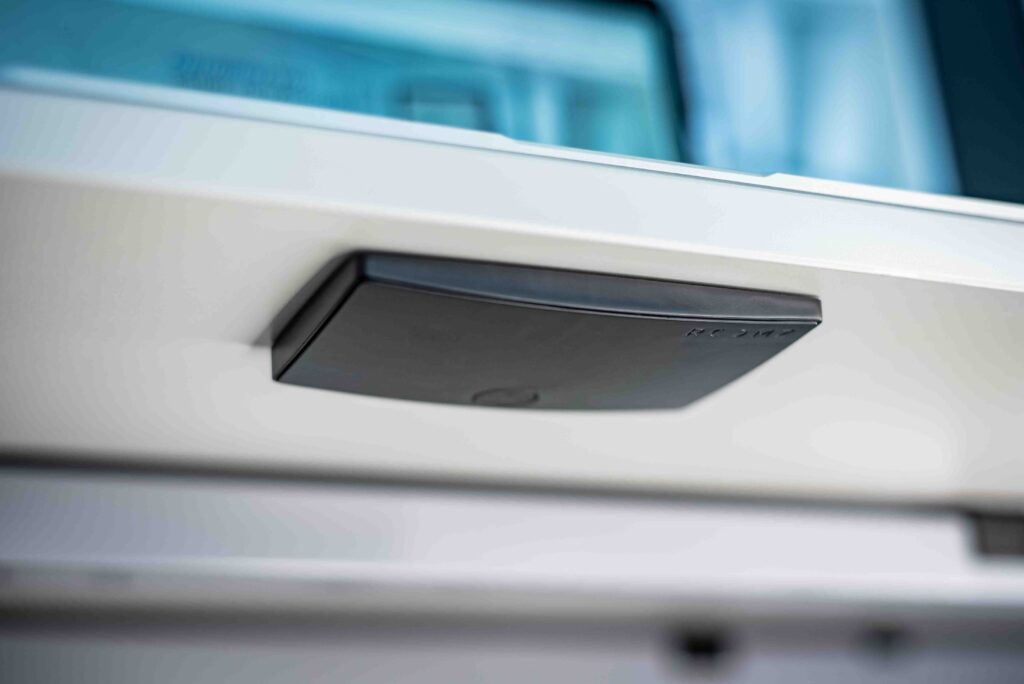The role of IoT occupancy sensors in workspaces and facility management
What are occupancy sensors?
Workplace occupancy sensors are a specific type of IoT sensor designed to monitor how spaces are used by detecting the presence or absence of people in real time. In office environments, the data they provide supports smarter decisions around workspace management, energy efficiency, and facilities planning
By providing data-driven information, IoT sensors (IoT: Internet of Things) are revolutionising the real estate and facility management sectors. Building management is taking on a whole new dimension with the real-time information they provide.
Different occupancy sensors depending on the type of workspace
-
Occupancy sensors for offices
Mainly used in flex office or shared office environments, office sensors are discreetly installed to detect whether or not an employee is present. By integrating this data into a workspace booking application or an interactive floor plan, employees can reserve a space in advance or go straight to it if it is available.
Learn more about the ROOMZ Desk Sensor >
-
Sensors for meeting rooms
70% of employees say they lose up to 15 minutes just looking for a space to meet, with 24% losing up to half an hour.1
The lack of available meeting rooms is a problem frequently raised by employees. Sensors installed inside rooms can identify whether a reserved room is occupied or not and if no activity is detected within a set period of time, the system automatically releases the room. This feature optimises the efficiency of rooms use and eliminates ghost meetings which still account for 30% of total bookings today.
Learn more about the ROOMZ Sensor >
-
Sensors for huddle spaces and phone boxes
Specially designed for smaller spaces, these motion sensors can determine in real time whether a space is vacant or not. By integrating this data into an interactive floor plan, employees can easily locate and choose an available workspace according to their needs during the day.
Learn more about the ROOMZ Huddle Sensor >
We would like to remind you that ROOMZ is the manufacturer and publisher of complete solution consisting of hardware and software. ROOMZ wireless presence sensors are designed to be easily and discreetly installed in workspaces. They measure a person’s presence using infrared sensors and a patented algorithm that enables us to guarantee complete anonymity, in compliance with principles of the General Data Protection Regulation (GDPR).
What advantages do occupancy sensors offer when optimising workspaces?
-
Sensor analytics to understand how your offices are used
Occupancy sensors play a central role in systems for analysing and measuring the utilisation of workspaces. This is because they make it possible to show three metrics that are essential for the building area:
-
- A real-time view of the occupancy of each workspace.
- The occupancy rate (time occupied/free time of a space) according to the hours and days of the week, the work area or room type.
- The utilisation rate, which gives an indication of how often each space is used.
By accessing this data, decision-makers gain an essential basis for developing an informed optimisation strategy and allocating resources to the right place.
-
Creating predictive analyses
By evaluating historical data provided by the sensors and analysing trends, decision-makers are able to plan the development of their workspace requirements. This proactive strategy enables companies to adapt the design of their workspaces to changing requirements, ensuring continuous optimisation.
-
Reducing building-related costs
By identifying under-utilised spaces, companies can minimise the costs associated with unoccupied space, such as electricity, heating and air conditioning consumption. This facilitates more efficient resource management and a reduction of costs associated with running the premises. The optimisation of workspaces therefore leads to significant savings while contributing to a more sustainable use of resources.
-
Improving the employee experience
By actively analysing occupancy levels and workspace usage patterns, sensors play a crucial role in improving the employee experience. They make it possible to optimise the office layout to meet the specific needs of employees. This personalisation of the working environment helps to increase employee comfort, well-being and satisfaction.
Learn more about ROOMZ Advanced Analytics >
Occupancy sensors are precise and effective devices for optimising the use of workspaces. By integrating them into companies, property managers, work environment managers and HR decision-makers can improve operational efficiency, reduce costs and promote a more productive and comfortable working environment for employees.
You may also be interested in:
- The ROOMZ ecosystem: Multiple challenges, one solution for your workspaces
- From employees to facility management, what are the requirements and solutions for workspaces?
Sources [1] Satisfaction Survey on Workspace Conducted by Steelcase I 2023
.
👉 Q&A about occupancy sensors and workspace management
1. What is the purpose of an occupancy sensor in a workplace?
An occupancy sensor measures real-time presence in offices, meeting rooms, or collaborative areas. It helps Facility Managers understand how spaces are used and optimize their layout to improve performance and reduce building-related costs.
2. How do ROOMZ occupancy sensors ensure privacy protection?
ROOMZ sensors use passive infrared technology and a patented algorithm to detect presence without capturing any image or personal data. Fully compliant with GDPR requirements, they guarantee complete user anonymity while providing reliable occupancy data.
3. What tangible benefits do occupancy sensors bring to companies?
Occupancy sensors help organizations better plan their spaces, eliminate ghost meetings, and enhance the employee experience. They are a key enabler for driving a data-driven workplace strategy.
4. What is the average battery life of ROOMZ sensors?
The battery included in ROOMZ sensors depends on daily usage, but the average lifespan is between 4 and 5 years, ensuring long-lasting operation with minimal maintenance.
